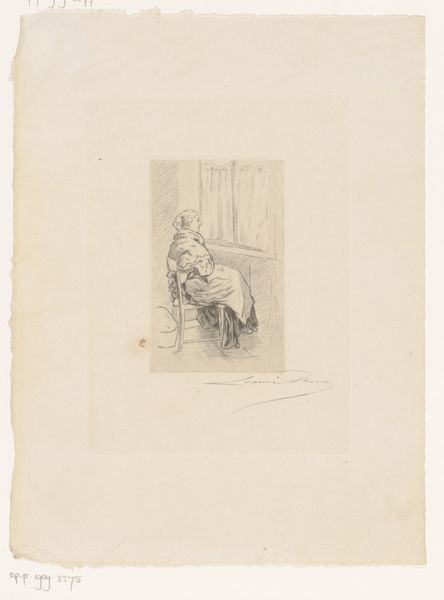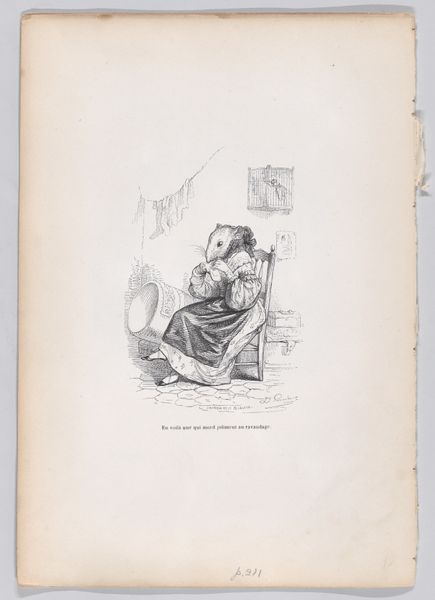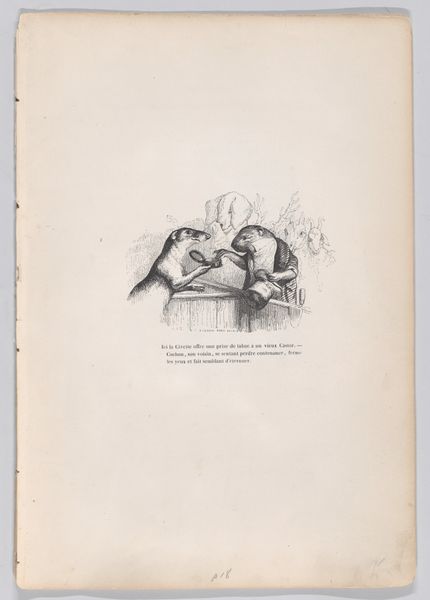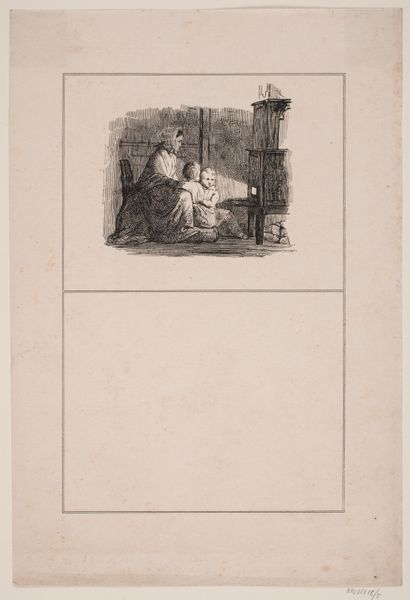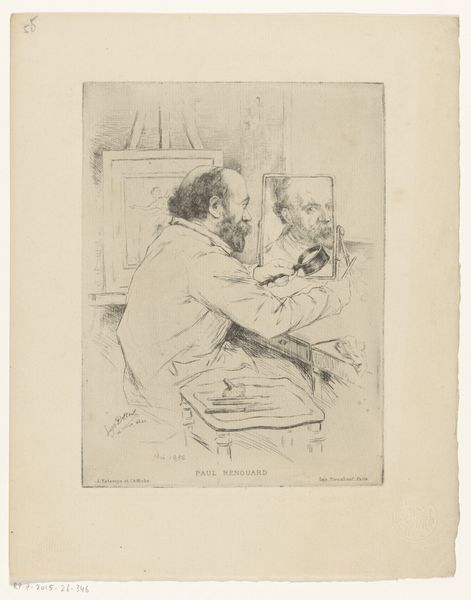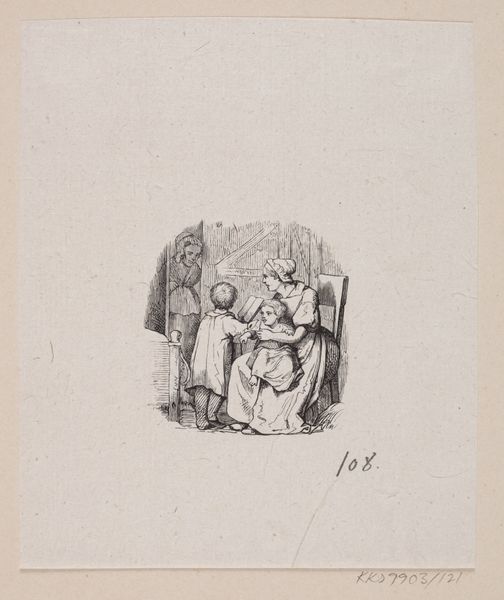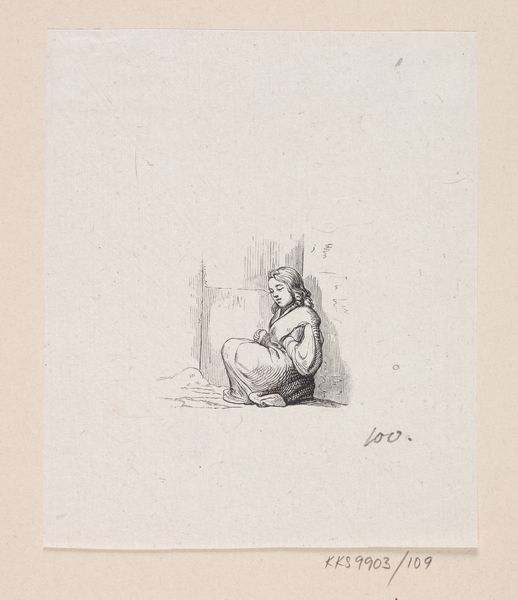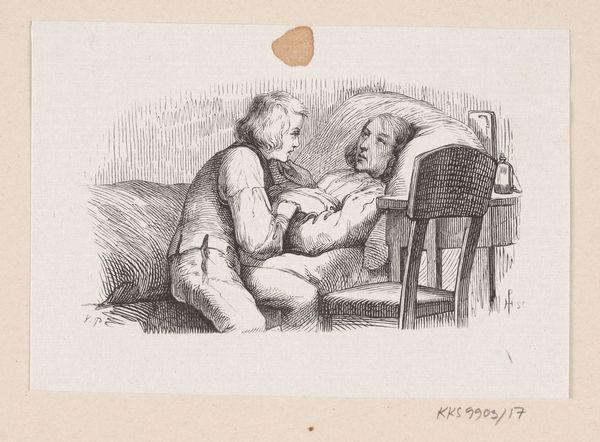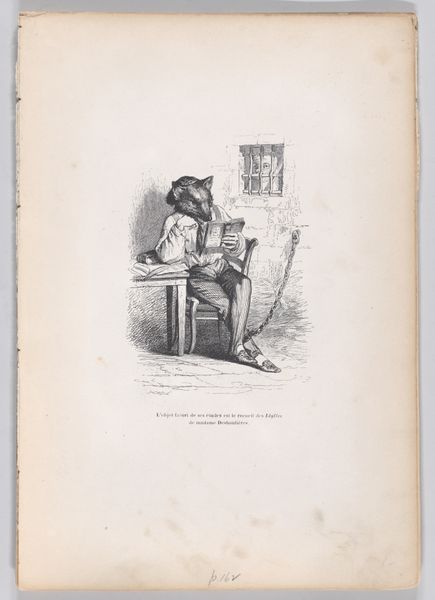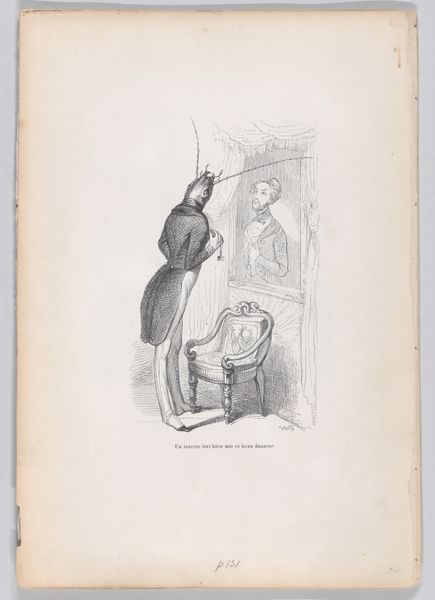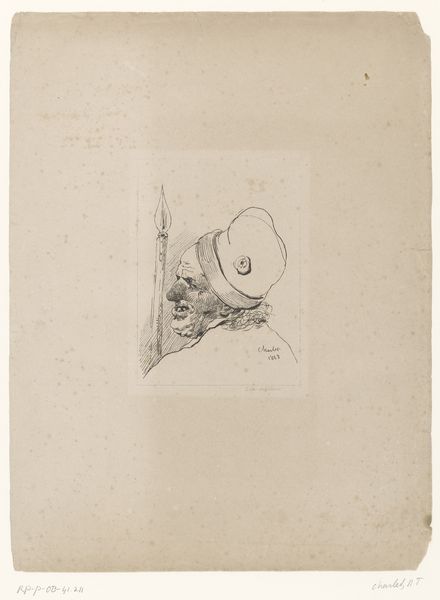
drawing, print, paper, ink
#
portrait
#
drawing
#
ink paper printed
# print
#
figuration
#
paper
#
ink
#
romanticism
#
watercolour illustration
#
genre-painting
Dimensions: 233 mm (height) x 271 mm (width) (bladmaal)
Curator: This delicate ink drawing, “En lille dreng i et sofahjørne,” which translates to "A Little Boy in a Sofa Corner," was rendered by an anonymous artist in 1845. The piece now resides at the Statens Museum for Kunst. What are your first thoughts? Editor: There's a quiet solemnity about this image. The way the artist has used line to depict the light falling on the child… It’s quite striking. Is he praying? Curator: The cultural context certainly points to that possibility. Representations of children often carried heavy symbolic weight during the Romantic period. This piece seems typical for the time, likely a commentary on the innocence of childhood or the vulnerability of youth, packaged for middle class consumption. Editor: Indeed. Note the textures. The roughness of the paper seems so at odds with the fragility of the moment portrayed, like a child bundled uncomfortably by coarse cloth, an interesting juxtaposition to consider given the themes. Curator: From my perspective, the paper’s likely not a coarse, cheap choice, but intentionally textured to invoke older drawing practices, hinting toward both historical context and perhaps referencing the print-making tradition, all serving specific societal audiences that this object itself was intended to service. Editor: That’s a compelling perspective. But what is the function of the peculiar decoration of the sofa's edge? Are those talismans, each containing a piece of a family story, carefully positioned around the boy like a protective charm? Curator: Interesting consideration. Such an intricate, almost mass produced lithograph suggests a burgeoning industry eager to reach a wider audience. These prints become domestic objects, mirroring the increasing importance of family life, and even personal religion for a burgeoning middle class. The production methods speak volumes about shifting social landscapes. Editor: So true... And for me, the bent head and folded hands speak to an almost universal yearning for security and guidance. What a delicate glimpse into a very personal cultural understanding of children. Curator: I concur entirely. Exploring it with you through its production, use and symbolism certainly adds valuable texture to our own understanding of this cultural fragment.
Comments
No comments
Be the first to comment and join the conversation on the ultimate creative platform.
